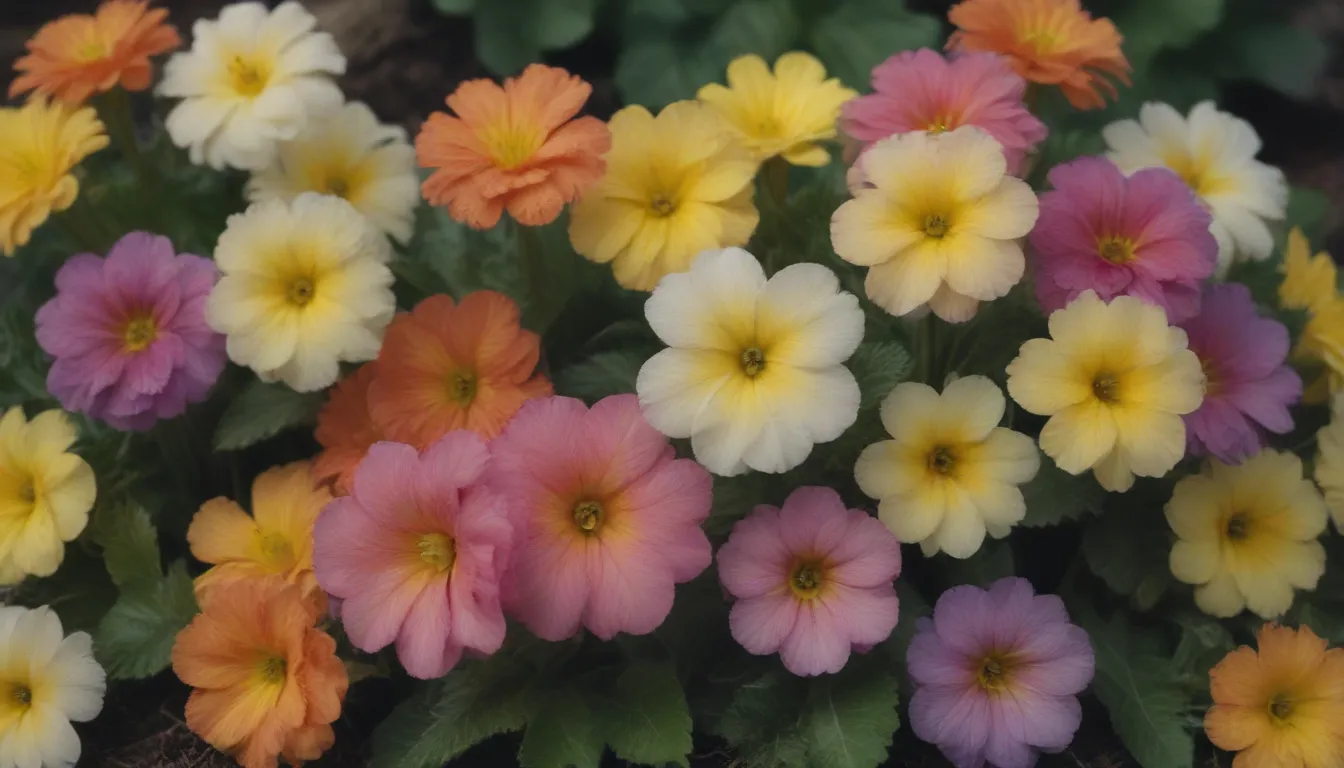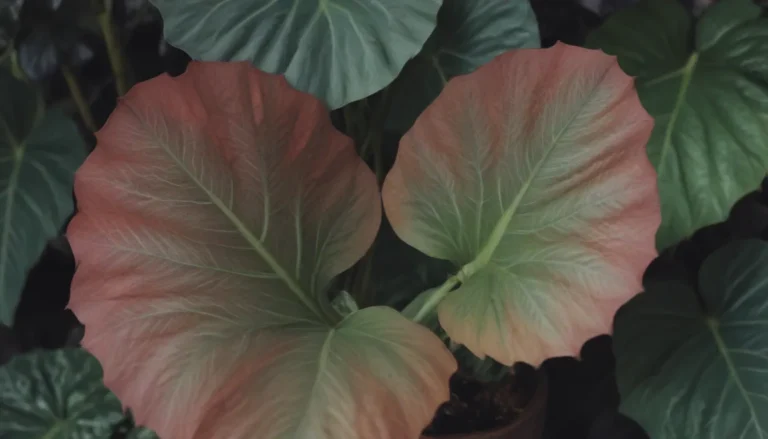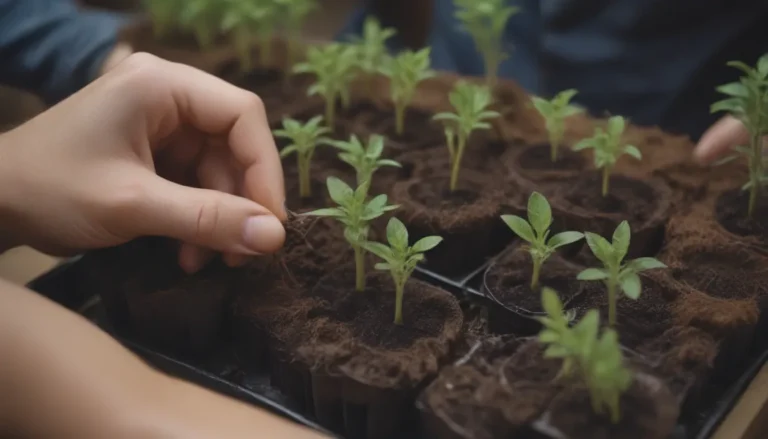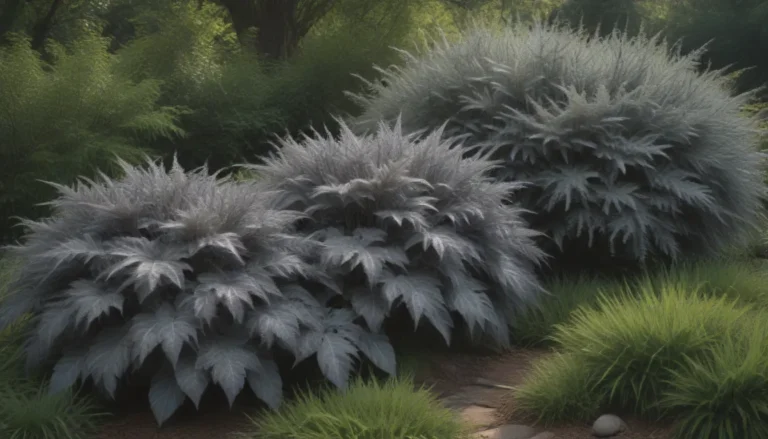A Comprehensive Guide to Growing and Caring for Primroses

When it comes to the Primula genus, the possibilities are nearly endless with over 500 species and countless hybrids and cultivars to choose from. Primroses, as they are commonly known, are short-lived perennials that add a pop of color and beauty to any garden. With their low rosettes of dark green leaves and umbrels of colorful flowers, primroses are a popular choice for many gardeners.
Diversity of Primrose Flowers
Primroses come in various shapes and sizes, with some varieties having clusters of flowers on a single stem, while others have one flower per stem. The flowers can range in color from vibrant pinks and purples to delicate pastels. Some primulas even remain evergreen in certain zones where they are hardy. However, it’s important to note that primrose plants are toxic to humans and pets, so caution should be taken when handling them.
Primrose Care Tips
Light
Primroses thrive in partial shade, making them the perfect addition to a garden bed near a tree or other structure that provides dappled sunlight. While some varieties can tolerate full sun, they will need extra watering to stay cool and hydrated. Most primroses prefer part-shade to thrive and bloom to their fullest potential.
Soil
As woodland plants, primroses prefer moist soil with a slightly acidic pH. They thrive in soil rich in organic matter, which helps retain moisture without becoming waterlogged. It’s essential to ensure that the soil is well-draining to prevent root rot, especially in varieties that don’t tolerate wet conditions.
Water
Primroses are fairly thirsty plants that require regular watering to keep the soil moist. Adding a layer of mulch around the plants can help retain moisture and regulate the soil temperature. However, it’s crucial not to let the soil become waterlogged, as this can lead to root rot and other issues.
Temperature and Humidity
Hybrid primroses are hardy in zones 5 to 7, but they can also be grown as annuals in warmer or colder zones. Some species types can tolerate colder temperatures, making them suitable for gardens in zone 2. However, primroses do not thrive in USDA Zones above 9 due to their need for a winter chill to bloom successfully.
Fertilizer
Hybrid primroses benefit from regular feeding with a half-strength liquid fertilizer to promote healthy growth and abundant flowering. On the other hand, species types are more sensitive to overfeeding and only require a single spring feeding to thrive. It’s essential to follow the recommended feeding schedule to avoid damaging the plants.
Types of Primrose Plants
There are several excellent varieties of primroses to choose from, each with its unique characteristics and growing requirements. Some popular types include:
- Primula polyantha
- Primula vulgaris
- Primula denticulata (drumstick primrose)
- Primula veris (cowslip)
- Primula kisoana (hardy primrose)
- Primula japonica (Japanese primrose)
Propagating Primroses
One of the easiest ways to propagate primroses is by lifting and dividing existing plants after they have finished flowering. This method ensures that you can maintain specific cultivars and expand your collection of primroses in your garden.
Growing Primroses from Seeds
While growing primroses from seeds can be challenging due to the specific temperature requirements, it is possible with the right conditions. Primroses require temperatures between 40 and 50 degrees Fahrenheit from sowing to blooming, making it difficult to achieve indoors. However, with proper care and attention to detail, growing primroses from seeds can be a rewarding experience.
Potting and Repotting Primroses
Primroses purchased as potted houseplants can be kept indoors year-round, with the option to move them outdoors during the summer months. Regular repotting into larger containers is essential to prevent the plants from becoming root-bound and to ensure they have adequate space to grow. Using a high-quality potting mix with good drainage is crucial for the health of your primrose plants.
Overwintering Primroses
Primroses that are hardy in your zone typically do not require any special care for overwintering. For more tender varieties, adding mulch or evergreen boughs around the plants can provide extra protection from harsh winter conditions. It’s important to monitor the plants closely and make adjustments as needed to ensure they survive the winter months.
Common Pests and Diseases
Primroses are generally pest-free but can occasionally be affected by spider mites, mealybugs, aphids, and whiteflies. These pests can be managed using non-chemical remedies such as horticultural oils. Additionally, primroses are prone to a leaf spot disease characterized by brown lesions on yellowing leaves. Removing infected foliage and improving air circulation around the plants can help prevent the spread of disease.
Tips for Encouraging Blooms
To encourage your primroses to bloom successfully, provide them with the optimal growing conditions, including:
- Temperature: Primroses prefer nighttime temperatures between 50 and 60 degrees Fahrenheit and daytime temperatures below 80 degrees Fahrenheit.
- Light: Indirect sunlight is ideal for primroses, as direct sunlight can cause the plants to overheat.
- Companion Plants: Primroses pair well with shade-loving plants like ferns, hostas, and astilbe in a garden bed.
With the right care and attention, primroses can live for up to five years, providing beauty and color to your garden year after year.
In conclusion, growing and caring for primroses can be a rewarding experience for gardeners of all skill levels. By following these tips and guidelines, you can enjoy the vibrant blooms and lush foliage of primroses in your garden for years to come. Remember to provide the proper light, soil, water, and fertilization to ensure your primroses thrive and bloom to their fullest potential. Happy gardening!





